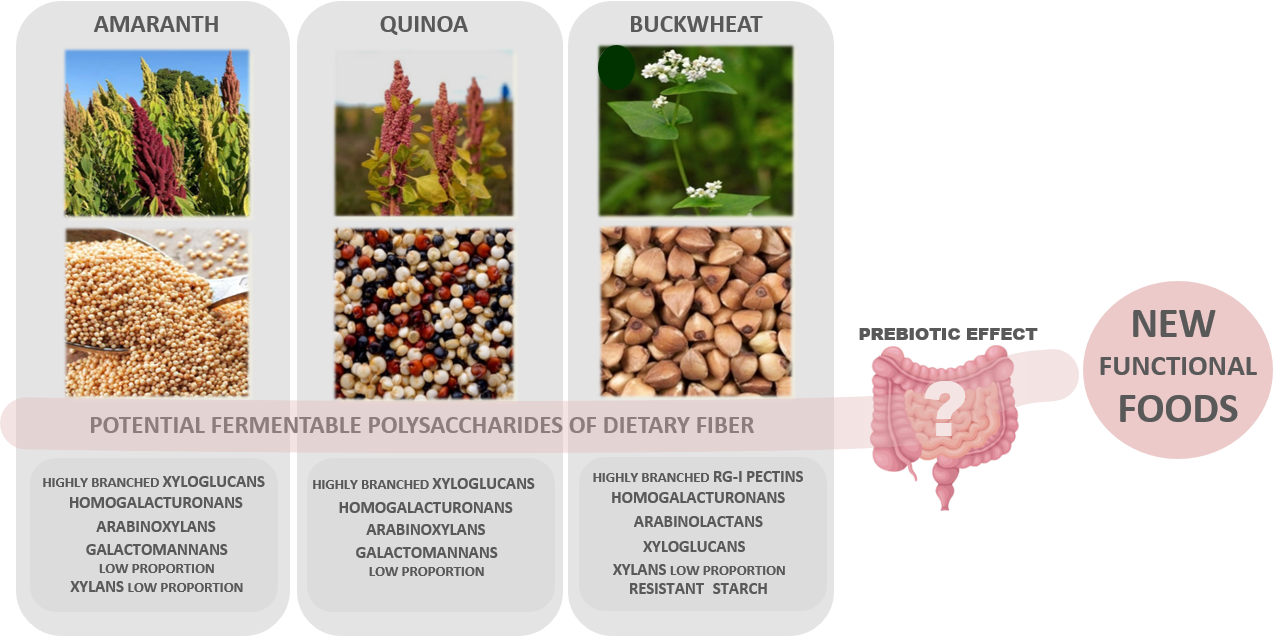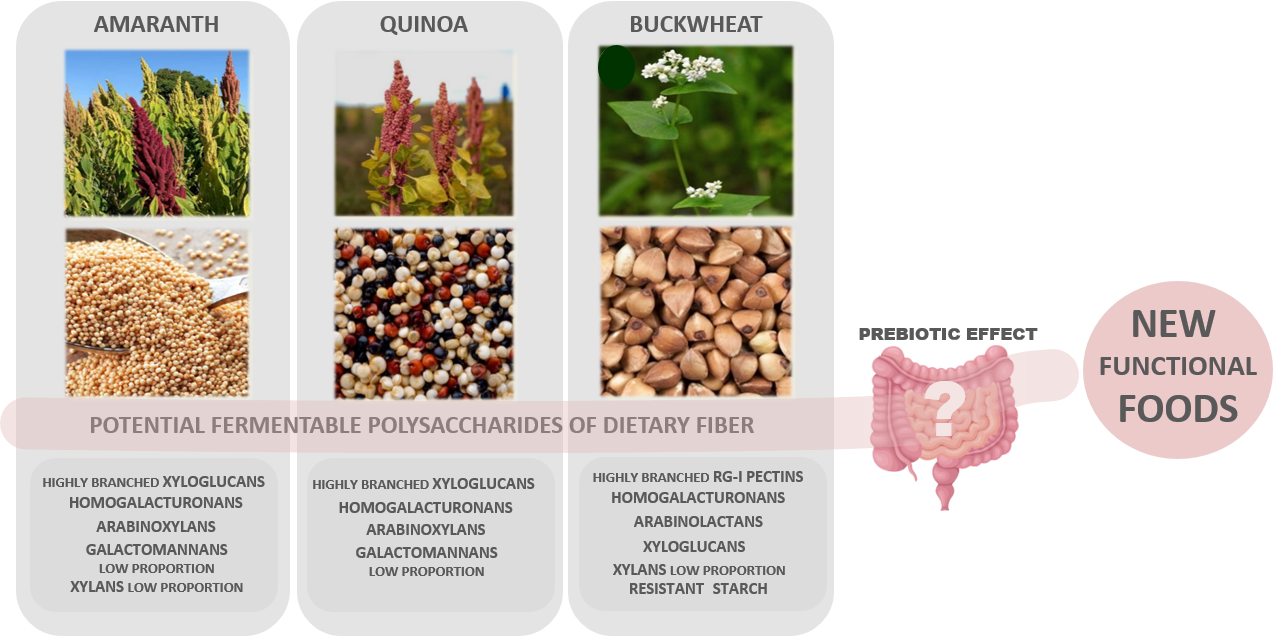Pseudocereals dietary fiber. Amaranth, quinoa, and buckwheat fiber composition and potential prebiotic effect
DOI:
https://doi.org/10.48162/rev.39.146Keywords:
Pseudocereals, Dietary Fiber, Prebiotic Effect, MicrobiotaAbstract

Amaranth (Amaranthus), buckwheat (Fagopyrum esculentum), and quinoa (Chenopodium quinoa) crops have limited production and agro-industrial development both in Argentina and globally. As the demand for functional ingredients and foods grows, developing products from these pseudocereals could offer substantial economic benefits. This study aims to analyze the dietary fiber content and composition of amaranth, quinoa, and buckwheat, and to investigate the relationship between dietary fiber structure and its potential prebiotic effects. Gaining insights into these aspects would provide valuable information for developing foods based on these pseudocereals and could enhance their future applications in the food industry.
Highlights:
- Pseudocereals have TDF levels similar to wheat, with varying fiber compositions.
- Amaranth and quinoa have high IDF/SDF ratios, close to the ideal 3:1 balance.
- Studies reveal pseudocereal fiber boosts beneficial microbes and SCFA production.
- Pseudocereals offer evidenced prebiotic benefits but need more research for validation.
- Amaranth, quinoa, and buckwheat are promising functional food ingredients.

Downloads
Published
Issue
Section
License
Copyright (c) 2018 Revista de la Facultad de Ciencias Agrarias UNCuyo

This work is licensed under a Creative Commons Attribution-NonCommercial-ShareAlike 3.0 Unported License.
Aquellos autores/as que tengan publicaciones con esta revista, aceptan las Políticas Editoriales.



